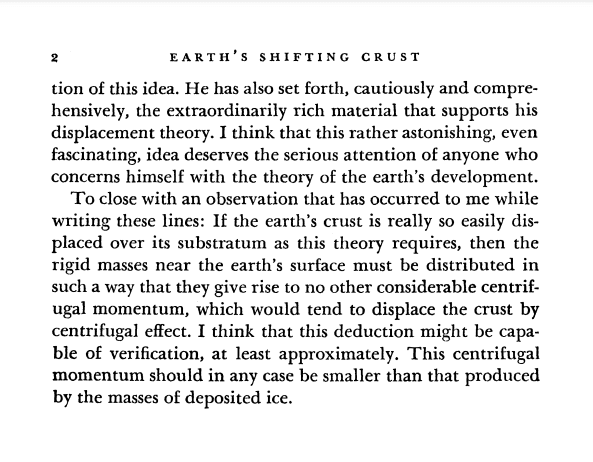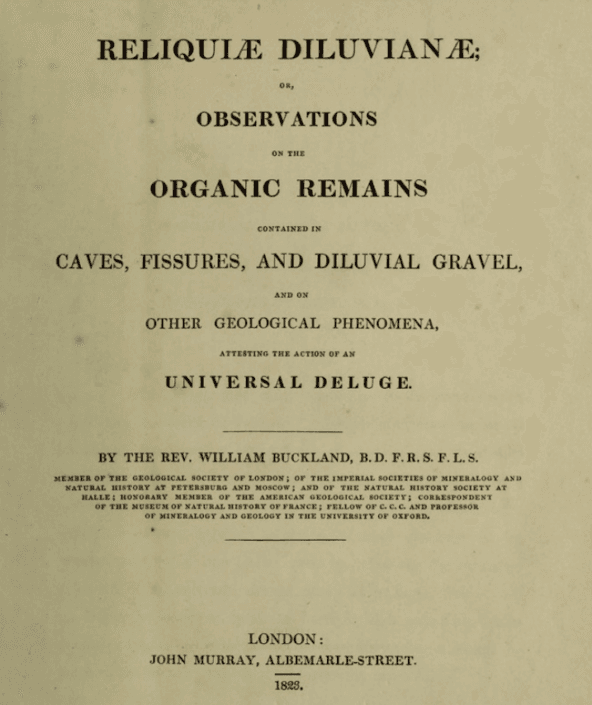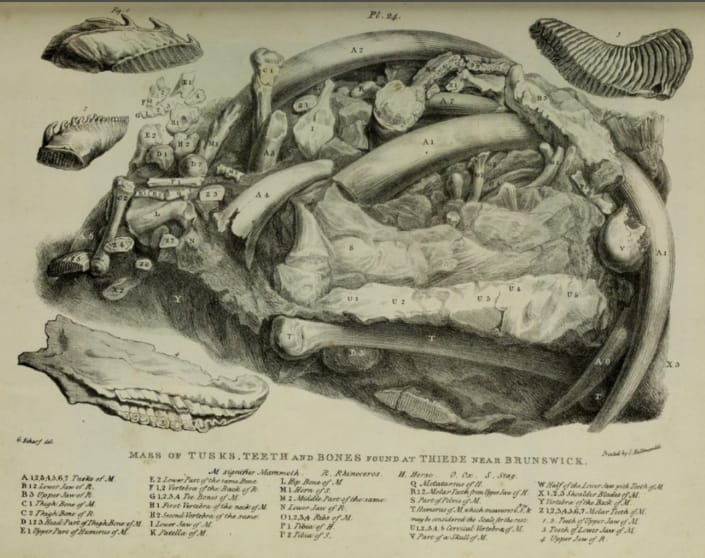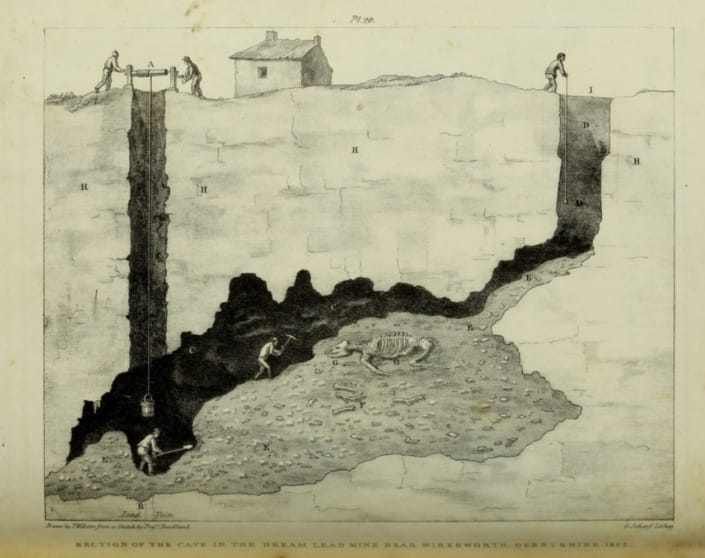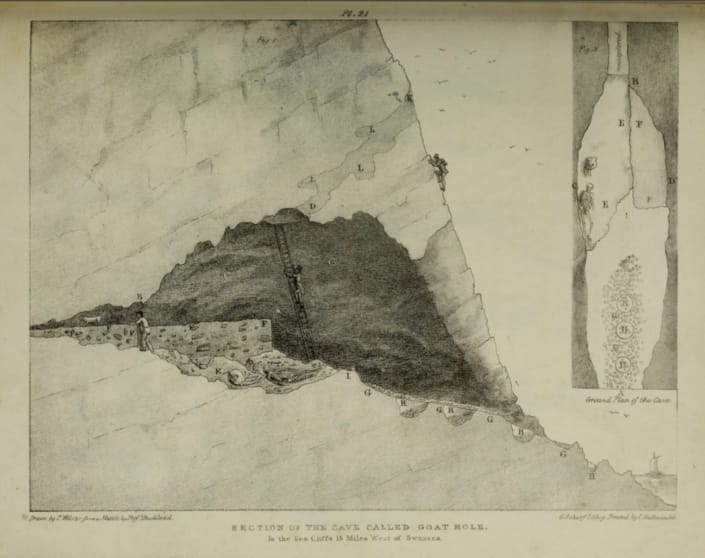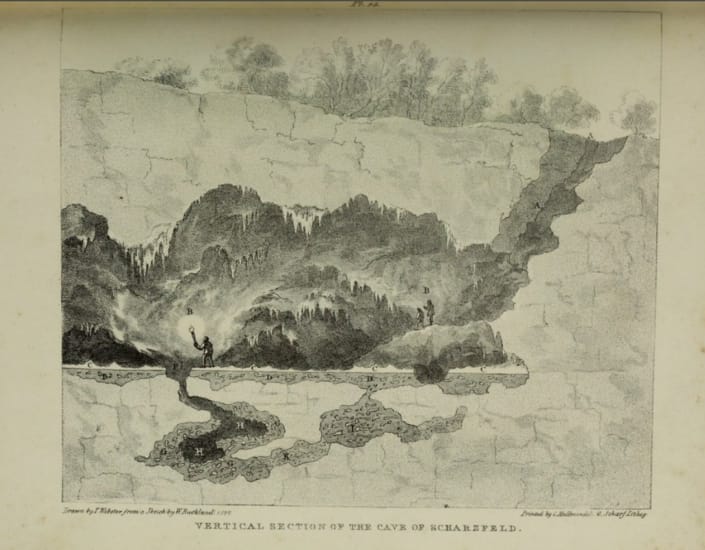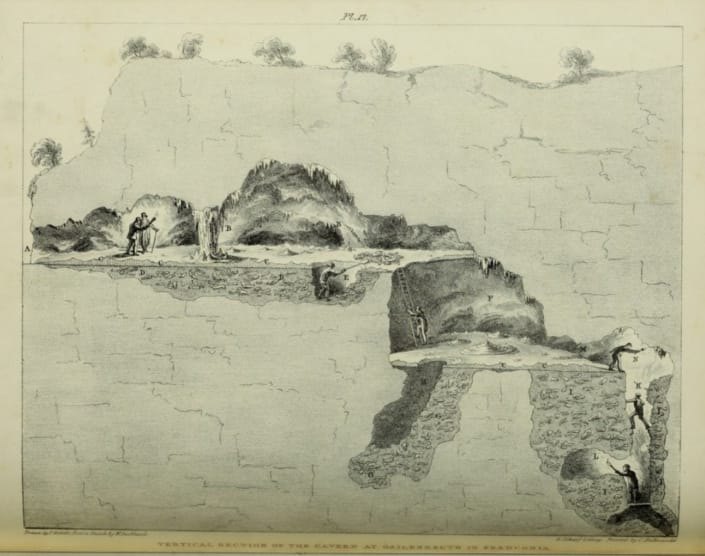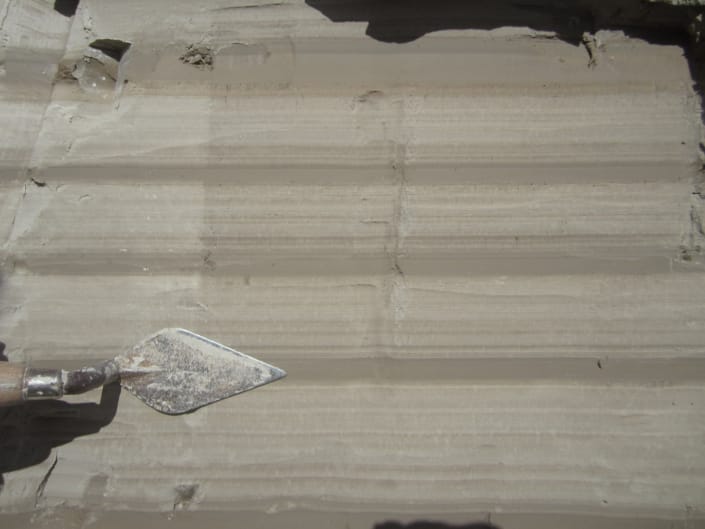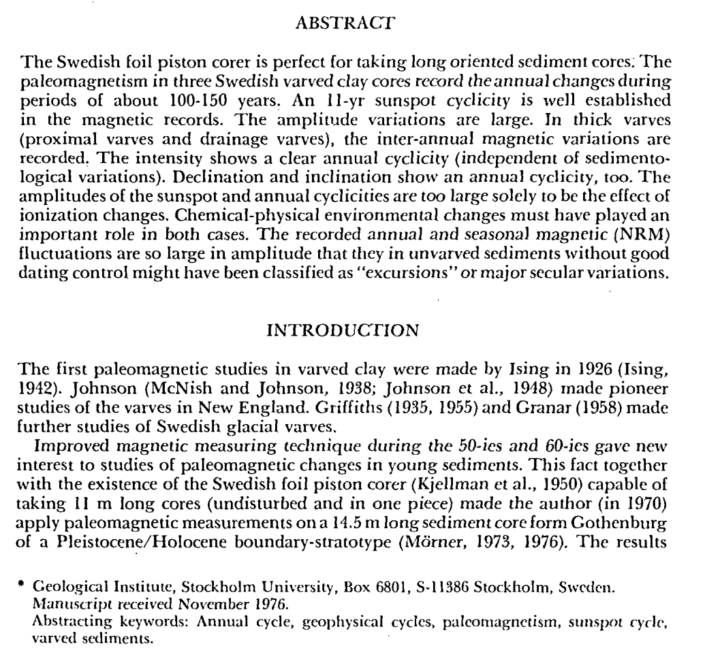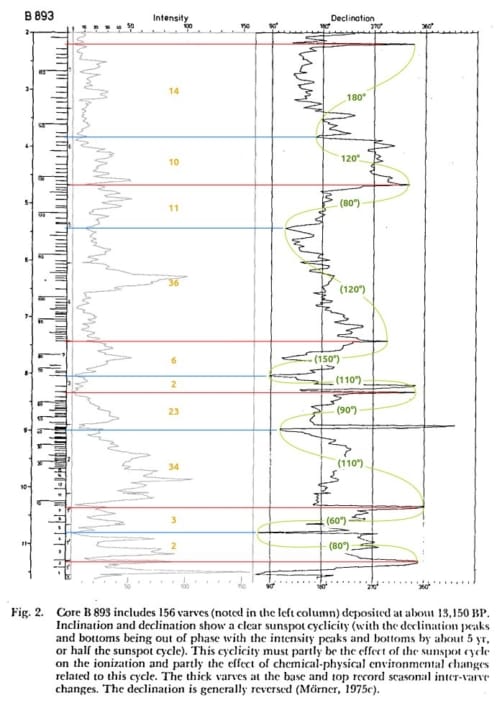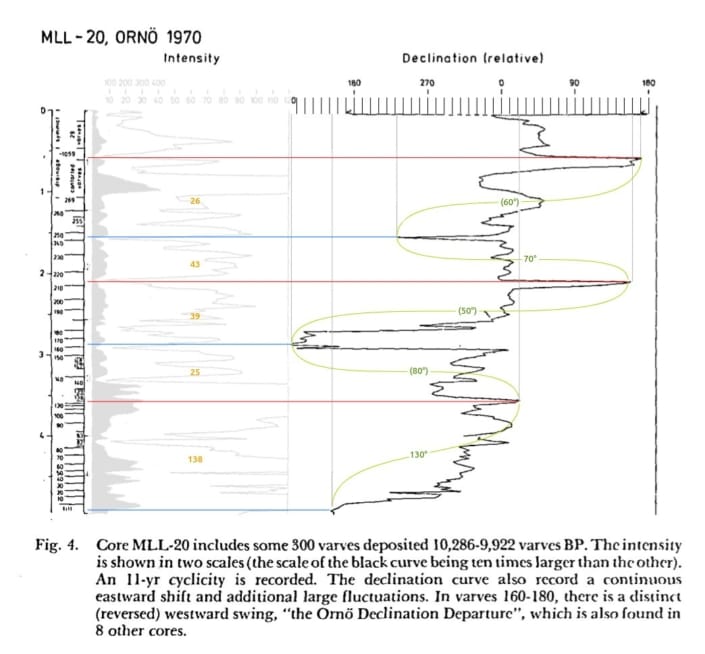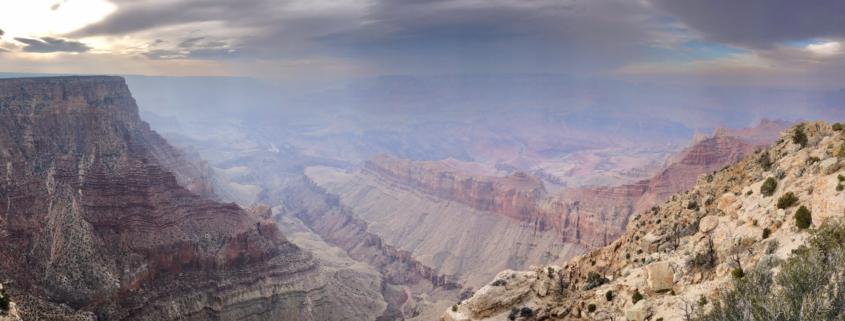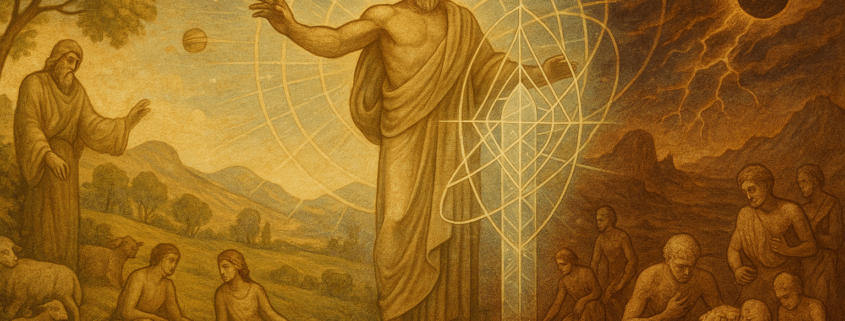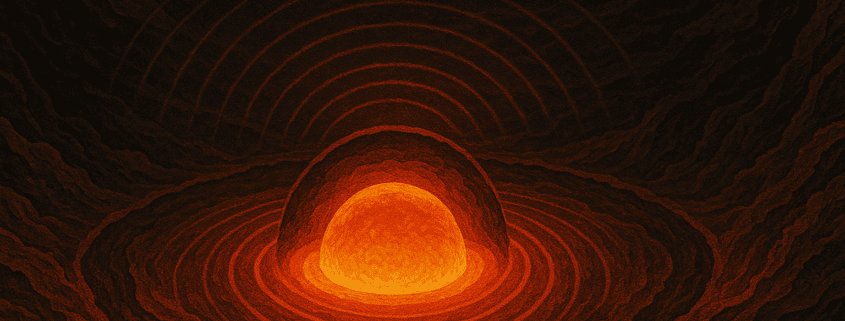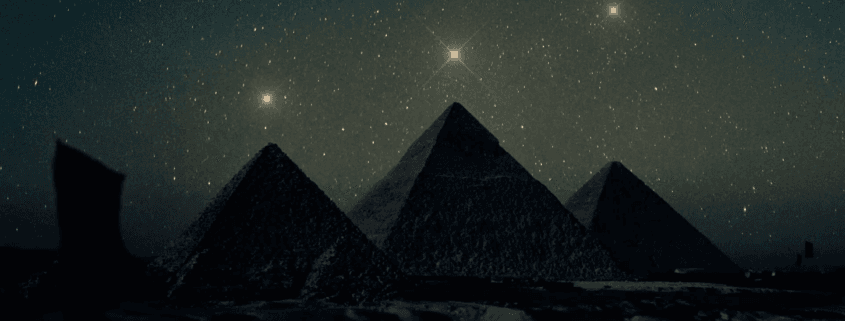“Everything flows, and nothing abides; everything gives way, and nothing stays fixed.”
Heraclitus
Introduction
The Memory of the Earth
In the depths of our planet’s history lies a truth so profound, yet so disturbing, that generations of scholars have turned away from its implications. The story written in Earth’s rocks, encoded in ancient texts, and preserved in the collective memory of humanity speaks not of gentle, gradual change, but of cosmic catastrophe—periodic convulsions that have repeatedly transformed our world and reshaped the course of civilization.
The modern mind, comfortable in its assumption of terrestrial stability, recoils from such thoughts. We have built our cities on the premise that the ground beneath our feet will remain forever fixed, that the poles will maintain their positions, that our protective magnetic shield will endure unchanged. Yet the evidence—geological, archaeological, astronomical, and mythological—tells a different tale.
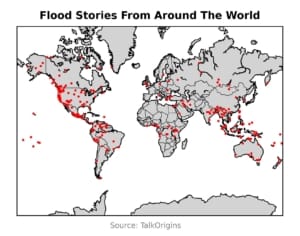
Flood Stories Map by @junhoBTC
In every corner of the globe, in every ancient culture, we find the same story told in different words: of fire from the sky, of worlds in collision, of floods that reached the mountaintops, of long nights and burning days, of the stars changing their courses, and of civilization beginning anew from the ashes of what came before. The uniformitarian paradigm dismisses these accounts as mere fantasy, as the product of primitive minds struggling to comprehend natural phenomena. But what if these stories are not mythology at all, but memory?
The Earth itself bears witness. Beneath the ice of Antarctica lie the fossilized remains of tropical forests. In the deserts of the Sahara, we find the bones of sea creatures. Mammoth carcasses in Siberia still contain undigested vegetation in their stomachs, as if flash-frozen in an instant. The magnetic minerals in ancient pottery tell us of field reversals so rapid they occurred within a single human lifetime. These are not the marks of slow, gradual change.
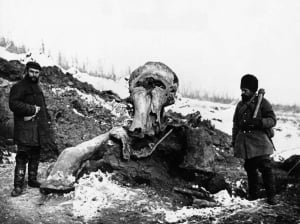
Berezovka Mammoth c1900
Modern science, with its sophisticated instruments and vast datasets, has begun to reveal patterns that our ancestors knew well. We have discovered that our solar system is not the clockwork model of perfect stability that we once imagined, but a dynamic system of interacting forces. The Sun’s activity follows cycles within cycles. The planets move in harmonic resonances that can build and diminish over time. And at the heart of our own world, the massive iron core holds secrets we are only beginning to understand.
The evidence points to a mechanism of planetary catastrophe so fundamental that it is written into the very structure of our solar system. This is not mere speculation, but a hypothesis supported by multiple lines of evidence across numerous scientific disciplines. The ECDO hypothesis—Exothermic Core-Mantle Decoupling and Dzhanibekov Oscillation—published under the nom de plume of The Ethical Skeptic, provides a physical mechanism for the periodic catastrophes recorded in Earth’s geological history and preserved in humanity’s oldest stories.
This book presents the case for a new understanding of Earth’s past and future—one that reconciles the geological evidence of catastrophe with the astronomical cycles that govern our solar system, and the ancient traditions that speak of periodic destruction and renewal. It is a journey through time and space, through myth and science, through the memories of our ancestors and the predictions of modern physics.
The implications of this understanding are profound, not just for our comprehension of Earth’s history, but for our future as a civilization. For if these cycles are real—if the catastrophes recorded in rock and legend are not mere fantasy but periodic events governed by cosmic mechanics—then we must ask ourselves: When will the next cycle begin? And are we prepared?
As we embark on this exploration, we must set aside both blind skepticism and uncritical acceptance. The truth we seek lies not in choosing between catastrophism and uniformitarianism, but in understanding how both paradigms reflect different aspects of Earth’s reality. For in the end, the story of our planet is also the story of ourselves—a tale of survival, adaptation, and the eternal cycle of destruction and renewal that shapes all things in our corner of the cosmos.
Let us begin this journey with open minds and careful reasoning, for the evidence we shall examine challenges not only our understanding of Earth’s past, but our assumptions about its future—and our place within its grand cycles of transformation.
Part I
Chapter 1: The Great Debate
The Birth of a Paradigm
On a spring morning in 1785, James Hutton stood before the Royal Society of Edinburgh and delivered a lecture that would reshape our understanding of Earth’s history. His theory of uniformitarianism—the idea that geological features are shaped by slow, gradual processes still observable today—would become the cornerstone of modern geology. “No powers are to be employed that are not natural to the globe,” he declared, “no action to be admitted except those of which we know the principle.”
This principle of gradualism, later popularized by Charles Lyell’s “Principles of Geology” (1830-1833), would come to dominate scientific thinking for the next two centuries. “The present is the key to the past,” became the mantra of geological sciences, a methodological framework that brought order to chaos and provided a foundation for understanding Earth’s processes. Yet in establishing this new paradigm, something crucial was lost—a deeper truth known to our ancestors and supported by evidence that we are only now beginning to fully comprehend.
The Forgotten Tradition
Before Hutton’s revolution, a different view prevailed. Georges Cuvier, studying the fossil beds of the Paris Basin, found evidence of sudden, dramatic changes in the fossil record—what he termed “revolutions on the surface of the globe.” The Comte de Buffon spoke of “epochs of nature,” distinct periods separated by catastrophic transitions. Even earlier, Nicolas Steno’s careful observations of geological strata suggested periodic interruptions in the normal course of deposition.
“The axis and the movement of rotation change; the two abandon their former position, to precipitate themselves towards the new equator; a large part of humans and animals, drowned in this universal deluge, or destroyed by the violent shock imprinted on the terrestrial globe; entire species annihilated; all the monuments of human industry, overturned; such are the disasters that the shock of a comet must have produced. We see then why the ocean has covered high mountains on which it has left incontestable marks of its stay; we see how the animals and plants of the Middle Ages have been able to exist in the northern climates where their remains and their imprints are found; finally, we explain the novelty of the moral world whose monuments hardly date back more than three thousand years. The human species, reduced to a very small number of individuals and to the most deplorable state, occupied for a very long time only with the care of preserving itself, must have entirely lost the memory of the sciences and the arts; and when the progress of civilization made the needs of them felt again, it was necessary to start all over again, as if humans had been placed anew on the earth.” – translated from Exposition du Systeme du Monde by Pierre-Simon, Marquis de Laplace (1796)
These early catastrophists were not working from mere speculation. They built their theories on careful observation of geological features that seemed to defy gradual explanation: vast beds of broken fossils, mixed marine and terrestrial deposits, evidence of rapid temperature changes, and geological unconformities that suggested sudden, violent events.
Albert Einstein’s foreword to Charles Hapgood’s Earth’s Shifting Crust (1958):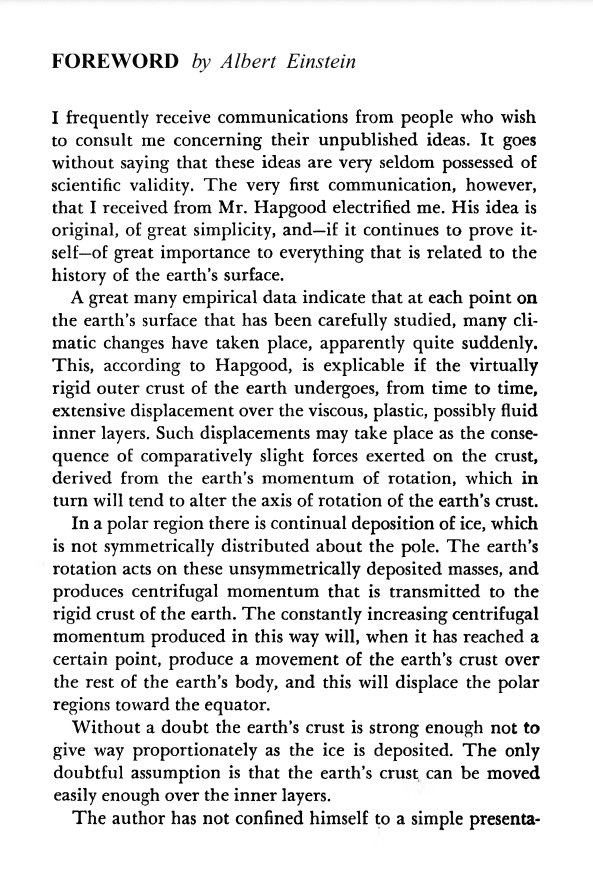
William Buckland published Reliquae Diluvianae in 1823. A ‘record of a deluge’, wherein he detailed the discovery and excavation of dozens of caves across Britain and Europe containing the disarticulated remains of thousands of animals from at least two dozen different species. In many cases the deposits were several meters deep, and seemed to have originated in a single event. The abundance of Buckland’s published finds suggest that he may have only uncovered the tip of the iceberg.
Species Found in Permafrost Mucks
| Common Name | Scientific Name | Habitat | Extinction Date | Region(s) |
|---|---|---|---|---|
| Terrestrial Species | ||||
| Woolly Mammoth | Mammuthus primigenius | Tundra, steppe | ~4,000 years ago | Herschel Island, Siberia, Alaska, Yukon |
| Woolly Rhinoceros | Coelodonta antiquitatis | Tundra, steppe | ~10,000 years ago | Siberia, Alaska |
| Steppe Bison | Bison priscus | Steppe, tundra | ~10,000 years ago | Herschel Island, Siberia, Alaska, Yukon |
| Cave Lion | Panthera spelaea | Tundra, taiga | ~10,000 years ago | Siberia, Alaska |
| Scimitar Cat | Homotherium latidens | Tundra, steppe | ~30,000 years ago | Siberia, Yukon |
| Cave Bear | Ursus spelaeus | Forest, tundra | ~24,000 years ago | Siberia |
| Yukon Horse | Equus sp. | Tundra, steppe | Unknown, likely extinct | Herschel Island, Siberia, Alaska, Yukon |
| American Mastodon | Mammut americanum | Forest, tundra | ~10,000 years ago | Herschel Island |
| Arctic Ground Squirrel | Urocitellus parryii | Tundra, taiga | N/A (extant) | Siberia, Alaska |
| Musk Ox | Ovibos moschatus | Tundra | N/A (extant) | Siberia, Alaska |
| Reindeer | Rangifer tarandus | Tundra, taiga | N/A (extant) | Siberia, Alaska, Yukon |
| Wolf | Canis lupus | Tundra, taiga, forest | N/A (extant) | Siberia, Alaska, Yukon |
| Red Fox | Vulpes vulpes | Tundra, taiga, forest | N/A (extant) | Siberia, Alaska |
| Ermine | Mustela erminea | Tundra, taiga, forest | N/A (extant) | Siberia, Alaska |
| Brown Lemming | Lemmus sibiricus | Tundra | N/A (extant) | Siberia, Alaska |
| Collared Lemming | Dicrostonyx torquatus | Tundra | N/A (extant) | Siberia, Alaska |
| Arctic Hare | Lepus arcticus | Tundra | N/A (extant) | Siberia, Alaska |
| Pika | Ochotona sp. | Tundra, alpine | Varies by species | Siberia, Alaska |
| Wood Frog | Lithobates sylvaticus | Forest, wetland | N/A (extant) | Alaska |
| Marine Species (Macrofauna) | ||||
| Chum Salmon | Oncorhynchus keta | Marine and freshwater | N/A (extant) | Herschel Island, Alaska |
| Marine Microfossils/Macrofossils | ||||
| Foraminifera | Various genera (e.g., Elphidium sp.) | Marine (benthic/planktonic) | N/A (group level, varies) | Herschel Island |
| Ostracods | Various genera (e.g., Cytheropteron sp.) | Marine (benthic) | N/A (group level, varies) | Herschel Island |
| Pelecypods (bivalves) | Various genera (e.g., Mya sp.) | Marine (coastal) | N/A (group level, varies) | Herschel Island |
The Pendulum Swings
The triumph of uniformitarianism was not merely a victory of evidence over speculation. It was a philosophical shift, part of the broader Enlightenment movement toward rational, mechanistic explanations of natural phenomena. The rejection of catastrophism was, in part, a rejection of the biblical flood narrative and other “supernatural” explanations for geological features.

The Eve of the Deluge by John Martin (1840)
Yet this pendulum swing went too far. In their eagerness to distance themselves from religious explanations, geologists began to dismiss any evidence of rapid or catastrophic change, even when the data demanded such interpretations. The discovery of the Channeled Scablands in eastern Washington State provides a telling example. J Harlen Bretz’s evidence for massive flood events was rejected for decades, not because the evidence was poor, but because it contradicted the prevailing gradualist paradigm.
Modern Synthesis
Today, we stand at the threshold of a new understanding. The discovery of the Chicxulub crater and its role in the K-T extinction event forced geologists to acknowledge that catastrophic events do play a role in Earth’s history. The recognition of impact craters across the globe, the evidence for rapid magnetic field reversals, and the geological signatures of massive floods have led to what some call “neo-catastrophism”—a view that incorporates both gradual processes and periodic catastrophes.
But this modern synthesis still falls short of the full picture. The assumption remains that catastrophic events are rare, random occurrences in an otherwise gradual system. The evidence we will examine in this book suggests something far more profound: that catastrophe is not the exception but an integral part of Earth’s operational system, occurring in predictable cycles driven by cosmic mechanics.
Varved clay proxies provide sub-annular paleomagnetic resolutions. The following charts are taken from Annual and inter‐annual magnetic variations in varved clay, Nils‐Axel Mörner (1978)[1], wherein paleomagnetic findings from VC cores dated to ±13,150 BP (spanning 156 varves/years) and ±10,000 BP (spanning 300 varves/years) are shown. These two cores span the Gothenburg Flip & Excursion[2] and the Ornö Declination Departure. What appears to be recorded in these proxies are multiple geomagnetic excursions and reversals which occurred within short succession, most within a few years to a couple of decades apart, with the majority reflecting a declination change of 80°-120°. This looks very much like what I would expect to see recorded from a series of ECDO-type events[3]. Coloured elements are my own additions. Blue and red indicate selected reversal points of magnetic declination. Orange numbers are the approximate number of varves/years between the reversals. Green curves and text indicate the approximate number of degrees change between the selected reversals. Raw chart values which exceed 180° have been subtracted from 360° and the absolute delta value displayed bracketed.
Beyond the False Dichotomy
The debate between catastrophism and gradualism reflects a deeper pattern in human thought—our tendency to seek simple, either/or explanations for complex phenomena. The reality of Earth’s history is more nuanced. Just as modern physics embraces both continuous wave functions and quantum jumps, a complete understanding of Earth’s dynamics must encompass both gradual change and periodic catastrophe.
The ECDO hypothesis, which we will explore in detail in the next chapter, provides a physical mechanism for how these seemingly contradictory modes of change can coexist. It shows how gradual processes can build to critical thresholds, triggering rapid transitions that appear catastrophic on human timescales.
Consider the simple analogy of water heating in a pot. For most of the process, the change is gradual and uniform—temperature rises steadily, molecular motion increases incrementally. But at a critical point, a phase transition occurs—bubbles form, convection cells develop, and the stable system becomes turbulent. Both the gradual heating and the phase transition are equally “natural” processes, governed by the same physical laws.
The Stakes of Understanding
This is not merely an academic debate. Our understanding of Earth’s past shapes our preparation for its future. If we cling too rigidly to gradualism, we risk being blindsided by catastrophic changes that are part of Earth’s natural cycles. The geological record, ancient traditions, and modern scientific data all point to the same conclusion: our planet’s history is punctuated by periodic catastrophes that reshape its surface and rewrite the story of life itself.
In the chapters that follow, we will examine the evidence for this view from multiple perspectives: geological, astronomical, archaeological, and mythological. We will see how modern scientific discoveries are, in many cases, confirming what ancient traditions have long maintained—that our world is subject to periodic upheavals that occur in predictable cycles.
More importantly, we will explore what this understanding means for our future. For if these cycles are real and predictable, we stand at a crucial moment in human history—a time when our scientific understanding might allow us to prepare for and perhaps survive the next great catastrophe in Earth’s ongoing story.
Chapter 2: The ECDO Hypothesis
The Pattern Hidden in Plain Sight
Deep within the Earth, beneath miles of rock and under immense pressure, our planet harbors a secret that may explain the mysterious patterns of catastrophe written in its geological record. The Earth’s core—a massive sphere of mostly iron and nickel—spins within its rocky mantle like a bearing within a race. This simple fact, known to science for nearly a century, holds the key to understanding some of the most profound mysteries in Earth’s history.
The ECDO hypothesis—Exothermic Core-Mantle Decoupling and Dzhanibekov Oscillation—published by The Ethical Skeptic in 2024 proposes that this apparently stable system is subject to periodic instabilities that can trigger global catastrophes. But unlike previous catastrophist theories, ECDO provides a mechanical explanation that bridges the gap between gradual processes and sudden changes, grounded in well-understood principles of physics and geology.
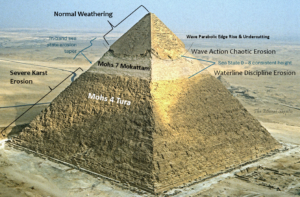
“Exhibit E – Karst erosion band is created by a pause in the sea level of a dramatic oceanic displacement (not flood) from antiquity. Its marks have been left for us to ponder and draw inference – both in the form of horizon-disciplined and wave-chaotic signatures, placed at just the correct height separation which natural ocean sea state variance would serve to impart.” – Hidden in Plain Sight by The Ethical Skeptic (2023)
The Components of Catastrophe
To understand ECDO, we must first understand its components:
The first is the core-mantle boundary, a region where liquid metal meets solid rock under conditions of extreme temperature and pressure. This boundary is not smooth but textured with irregularities and variations in composition and magnetic interaction. Like the surface between two fluids of different densities, it can maintain stability for long periods before suddenly transitioning to a new state.
The second component is the process of exothermic decoupling. Under normal conditions, the core and mantle maintain a coupled rotation, with friction between them generating heat that is gradually dissipated. However, under certain conditions, this coupling can break down. When it does, the energy released is not gradual but explosive—an exothermic reaction that can trigger a cascade of effects throughout the planet.
The third element is the Dzhanibekov effect, named after cosmonaut Vladimir Dzhanibekov who first observed it in space. This peculiar phenomenon occurs when a rotating body suddenly flips its axis of rotation by 180 degrees. While seemingly improbable for a body as large as Earth, the mathematics shows that under certain conditions—particularly during periods of core-mantle decoupling—such a flip becomes not only possible but inevitable.
The Mechanism of Change
When these components interact, they create a system capable of both long-term stability and sudden, catastrophic change. The process unfolds in stages:
First, gradual processes build potential energy in the system. This might include changes in the Earth’s rotation rate, shifts in mass distribution, or variations in electromagnetic coupling between core and mantle. These changes can accumulate over thousands or even millions of years without visible effect.
Second, when critical thresholds are reached, the core-mantle coupling begins to break down. This process releases enormous amounts of energy, much of it in the form of heat. The sudden release of heat causes thermal expansion, leading to increased pressure throughout the Earth’s interior.
Third, the combination of decoupling and energy release can trigger a Dzhanibekov-type oscillation. Unlike a simple polar shift, this involves a complex reorientation of the Earth’s entire rotational dynamics. The result is not just a magnetic reversal but a physical reorganization of the planet’s mass distribution.
Prandtl Rotations – Geodynamic Instabilities in the Laboratory
Evidence in the Record
The beauty of the ECDO hypothesis lies in its ability to explain multiple lines of evidence that have long puzzled geologists:
- Magnetic reversals: The sudden flips in Earth’s magnetic field recorded in rocks worldwide are not merely electromagnetic phenomena but signatures of physical core reorientations.
- Mass extinctions: The periodic nature of mass extinctions, occurring roughly every 27 million years, aligns with predicted cycles of core-mantle instability.
- Rapid climate changes: The sudden temperature shifts recorded in ice cores and geological deposits can be explained by rapid geographical reorientation relative to the sun.
- Geological unconformities: The sharp boundaries between geological strata, often attributed to missing time periods, may represent moments of rapid crustal reorganization.
Modern Observations
Recent scientific observations provide additional support for the ECDO model:
- Satellite measurements show unexpected variations in Earth’s rotation rate and pole position. While these changes are currently minor, they may be early indicators of building instability.
- Seismic data reveals anomalies at the core-mantle boundary that could facilitate decoupling. These include large low-shear-velocity provinces (LLSVPs) and ultra-low-velocity zones (ULVZs).
- Paleomagnetic studies indicate that some magnetic field reversals occurred much more rapidly than conventional theory can explain—in some cases within a human lifetime.
Predictions and Implications
The ECDO hypothesis makes several testable predictions:
- Precursor events should be detectable before major transitions, including changes in Earth’s rotation rate, magnetic field behavior, and seismic patterns.
- The timing of catastrophic events should follow predictable cycles related to celestial mechanics and core dynamics.
- Evidence of past events should show similar patterns across multiple geological and archaeological indicators.
More importantly, if the hypothesis is correct, we may be approaching another period of instability. The current weakening of Earth’s magnetic field, increasing seismic activity, and observed changes in rotation rate could be early warnings of an impending transition.
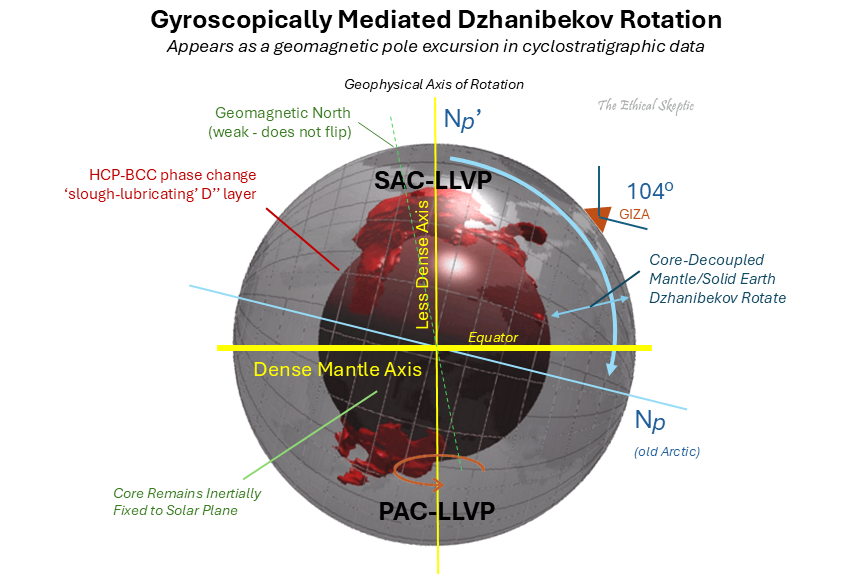
“Exhibit J – The Solution – Inertial Interchange 104° True Polar Wander (IITPW) – Internal schema of core, mantle, SAC-LLVP, and PAC-LLVP in relation to the Gyroscopically Mediated Dzhanibekov Rotation. The ‘mediation’ involves the intervention of the lighter moment of Earth’s mass distribution—composed by the net centroids of its LLVP structures, this becomes Earth’s new less-dense Conservation of Angular Momentum (gyroscopic) rotational axis.
The reader should note that in this scenario, geomagnetic north has not moved; rather, it is the mantle, asthenosphere, and lithosphere (crust) that have undergone rotation. The sloughing of the D” layer acts as a lubricating mechanism between the core and the mantle, facilitating this process, much like applying duct tape to a ball of melting butter—it simply won’t adhere.
Earth’s core remains in its same stable rotation, locked relative to the solar plane by the solar system’s A (the vector potential) and ϕ (the scalar potential) moments30 – albeit bearing a weaker magnetic moment, and with a slightly lower total mass. The D” layer affords the disconnect between the mantle and core’s rotating masses. We address the combined mass of the mantle and crust (mesosphere, asthenosphere, and lithosphere) as the outer rotational body (ORB), for short. (It should be noted that we hold open the alternative possibility of a similar decoupling at the H-layer inside the mantle as well. Same principle of rotation applies however in both decoupling scenarios.)” – Exothermic Core-Mantle Decoupling – Dzhanibekov Oscillation (ECDO) Hypothesis
Beyond Earth
The implications of ECDO extend beyond our planet. Similar mechanisms might explain geological features observed on Mars, including its dramatic hemispheric dichotomy and evidence of sudden pole shifts. The hypothesis might also help explain the peculiar magnetic fields of Uranus and Neptune, and even certain features of exoplanets.
A New Framework
The ECDO hypothesis represents more than just another catastrophist theory. It provides a mechanical framework that unifies many seemingly disparate phenomena—from magnetic reversals to mass extinctions, from climate changes to crustal displacement. Most importantly, it offers a bridge between the gradualist and catastrophist paradigms, showing how both can be aspects of a single, unified system.
In the chapters that follow, we will examine specific evidence for past catastrophes and explore how the ECDO mechanism might have triggered them. We will also consider what this understanding means for our future, and how we might prepare for the possibility of another such event in our lifetime.
Visualization of the two-stage mediated Dzhanibekov oscillation described by The Ethical Skeptic in the ECDO hypothesis.
Chapter 3: The Scientific Record
The Archives of Catastrophe
The Earth keeps its own records. Written in stone, ice, magnetite, and organic matter, these records tell a story far more complex than the gradual, uniform processes that dominated geological thinking for nearly two centuries. Like the rings of a tree or layers of an ice core, each stratum contains information about the conditions under which it formed—and about the catastrophes that interrupted its formation.
The Magnetic Testament
Perhaps the most striking evidence for past catastrophes lies in the Earth’s magnetic record. Frozen into the crystalline structure of magnetic minerals, this record reveals not just the slow drift of continents but moments of sudden, dramatic change that challenge our understanding of Earth’s dynamics.
The Steens Mountain basalts in Oregon tell a particularly compelling story. Here, successive lava flows recorded the position of Earth’s magnetic field as they cooled. What they reveal is astonishing: during one particular field reversal, the magnetic poles appear to have shifted at rates exceeding 6 degrees per day—thousands of times faster than conventional theory suggests possible. This is not an isolated finding. Similar evidence of rapid magnetic changes has been found in other locations worldwide, including the ancient pottery kilns of Cyprus and the volcanic deposits of Réunion Island.
These rapid changes pose a fundamental challenge to conventional geodynamo theory. The liquid outer core, where Earth’s magnetic field is generated, was thought to be too massive and viscous to permit such rapid changes. Yet the evidence is written in stone. The ECDO hypothesis, with its mechanism for rapid core reorientation, offers a possible explanation for these otherwise puzzling observations.
Chemical Signatures
The chemical composition of rocks and sediments provides another line of evidence for past catastrophes. In numerous locations around the globe, we find sharp transitions in isotope ratios that indicate sudden, dramatic changes in environmental conditions:
The Younger Dryas boundary layer, dated to approximately 12,800 years ago, contains elevated levels of platinum group elements, nanodiamonds, and magnetic spherules—signatures consistent with a major cosmic impact or solar outburst event. This layer coincides with the extinction of many North American megafauna and the disruption of human cultures across multiple continents.
Deep ocean sediments reveal periodic “carbon excursions”—sudden changes in the ratio of carbon isotopes that suggest massive disruptions of the global carbon cycle. These events, such as the Paleocene-Eocene Thermal Maximum (PETM), have traditionally been interpreted as gradual changes occurring over thousands of years. However, recent high-resolution studies suggest that many of these transitions occurred much more rapidly than previously thought.
The Deep Record
Recent advances in seismology and geophysical imaging have revealed structures deep within the Earth that may preserve evidence of past catastrophes:
- Large Low-Shear-Velocity Provinces (LLSVPs) at the core-mantle boundary suggest areas where the core and mantle may have experienced significant interaction or partial decoupling in the past. These massive structures, thousands of kilometers across, may represent “scars” from previous catastrophic events.
- Ultra-Low-Velocity Zones (ULVZs) near the core-mantle boundary show evidence of unusual chemical and physical properties that could facilitate the kind of core-mantle decoupling proposed by the ECDO hypothesis.
- Seismic tomography reveals patterns of mantle convection that appear to have been disrupted and reorganized multiple times in Earth’s history, possibly coinciding with periods of catastrophic change.
Surface Scars
The Earth’s surface bears unmistakable marks of past catastrophes:
- The Channeled Scablands of eastern Washington State, once controversial, are now recognized as the result of massive floods from the sudden drainage of glacial Lake Missoula. The scale of erosion—coulees hundreds of feet deep carved into solid basalt—testifies to water flows that dwarf anything seen in historical times.
- The Carolina Bays and their counterparts in Nebraska—thousands of elliptical depressions with consistent orientation—suggest a massive impact event or series of events that affected much of North America. Similar features have been identified on other continents, hinting at a global catastrophe.
- Geological unconformities—gaps in the sedimentary record—occur worldwide at certain time horizons. While traditionally interpreted as periods of non-deposition or erosion, many show evidence of sudden, violent events including massive tsunami deposits, impact ejecta, and rapid burial of organic material.
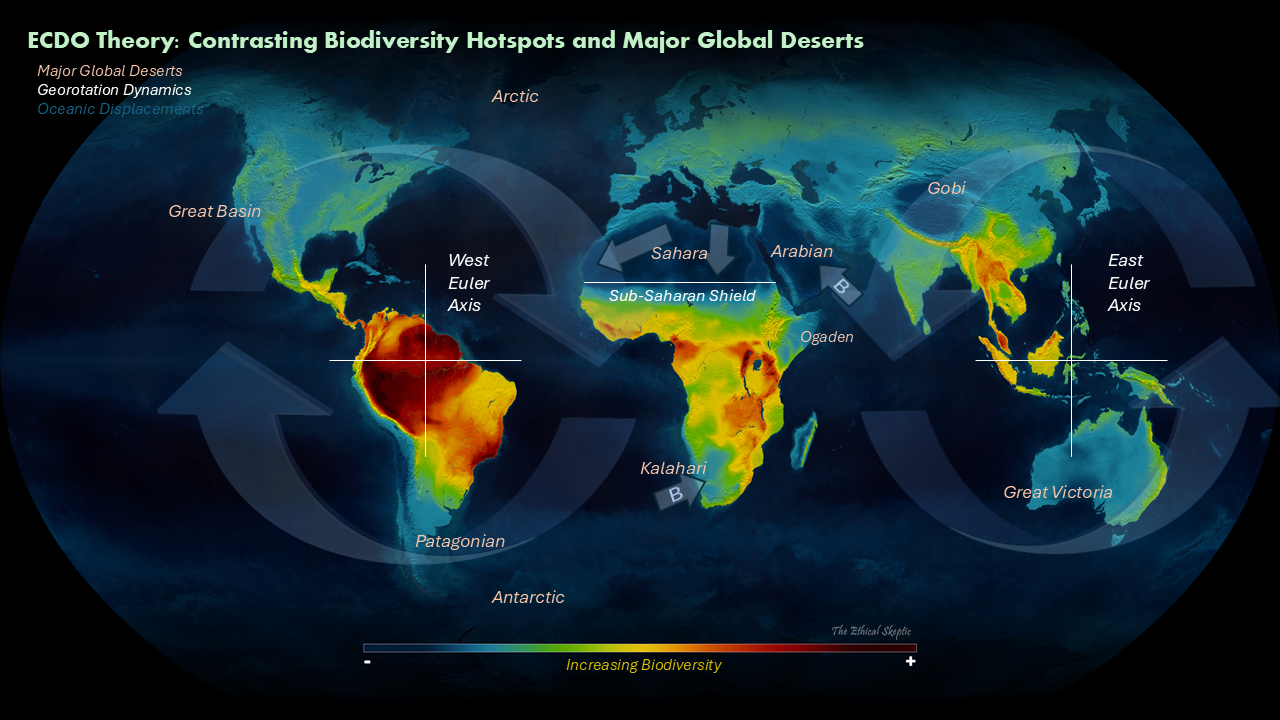
“Exhibit J5 – Desert versus Biodiversity – The biodiversity model confirms the survival points at each Euler Axis geographic location, complemented by regions of the African continent that were shielded from inundation by the landmass now known as the Sahara desert. Genetic diversity in these areas is both strikingly varied and ancient when compared to the rest of the Earth. The two oceanic displacements marked with a ‘B’ are proposed post-rotation back-flows.” – Exothermic Core-Mantle Decoupling – Dzhanibekov Oscillation (ECDO) Hypothesis
The Biological Record
The fossil record, long cited as evidence for gradual evolution, contains numerous examples of sudden, dramatic change:
- Mass extinctions, occurring at regular intervals of approximately 27 million years, suggest a cosmic cycle rather than random catastrophes. The preservation state of many fossils—including articulated skeletons, flash-frozen mammals, and leaves with intact cellular structure—indicates rapid burial under unusual conditions.
- Prehistoric human settlements show evidence of sudden abandonment, often accompanied by signs of natural disaster. The archaeological record is punctuated by destruction layers containing evidence of fires, floods, and rapid burial events.
Are the dinosaurs really as old as we have come to believe? The discovery of soft tissue in the horn of a Triceratops horridus (and other specimens) suggests that we may have it wrong:
Modern Analogues
Current geological processes provide small-scale analogues for ancient catastrophes:
The 2004 Indian Ocean tsunami demonstrated how submarine earthquakes can generate waves capable of transporting massive boulders and creating extensive erosional features. Similar deposits in the geological record, once attributed to gradual processes, are now recognized as tsunami deposits.
Recent discoveries of subsurface water on Mars and evidence of past magnetic field reversals on other planets suggest that the mechanisms proposed by ECDO may operate throughout the solar system.
Time’s Texture
Perhaps most significantly, detailed examination of geological deposits reveals that time itself has a texture—periods of relative stability punctuated by moments of rapid change. This pattern appears at all scales, from individual sedimentary layers to major geological boundaries.
Modern dating techniques have revealed that many geological transitions previously thought to represent thousands or millions of years actually occurred much more rapidly. The Permian-Triassic extinction boundary, for example, appears to represent a catastrophic event lasting less than 60,000 years—a geological instant.
Geomagnetic field timelapse by @junhoBTC:
The Convergence of Evidence
What makes these various lines of evidence particularly compelling is their convergence. Magnetic reversals often coincide with extinction events. Major geological boundaries frequently show evidence of multiple catastrophic indicators—magnetic excursions, iridium anomalies, shocked minerals, and rapid biological turnover.
This convergence suggests that these events are not independent phenomena but different manifestations of the same underlying process—precisely what we would expect if the ECDO hypothesis is correct.
Implications for the Future
The scientific record not only tells us about past catastrophes but provides clues about future ones. Current observations of Earth’s magnetic field, rotation rate, and seismic patterns can be compared with similar indicators preserved in the geological record.
Understanding these patterns is not merely an academic exercise. If the ECDO hypothesis is correct, the same mechanisms that produced past catastrophes remain active today. The Earth’s memory, written in stone and ice, may hold the key to understanding—and perhaps surviving—the next great transformation in our planet’s ongoing story.
Summary
The evidence presented in these opening chapters compels us to fundamentally reconsider our understanding of Earth’s history and dynamics. We have seen how the long-standing debate between catastrophism and gradualism reflects not an either-or choice, but a false dichotomy that has hindered our comprehension of Earth’s true nature. The planet’s history encompasses both gradual change and periodic catastrophe, operating not as opposing forces but as complementary aspects of a single, unified system.
The ECDO hypothesis provides, for the first time, a coherent mechanical explanation for how these seemingly contradictory modes of change can coexist. By identifying the critical role of core-mantle interactions and their relationship to cosmic cycles, it offers a framework that can explain both the long periods of stability in Earth’s history and the moments of dramatic transformation that punctuate them.
The scientific record supports this new understanding. From the magnetic signatures frozen in ancient rocks to the chemical markers of sudden environmental change, from the scars on Earth’s surface to the structures deep within its interior, multiple lines of evidence converge to tell a consistent story. This is not the tale of slow, uniform change that dominated geological thinking for nearly two centuries, nor is it the random catastrophism of earlier theories. Instead, it is a story of rhythmic cycles operating at multiple scales, building gradually toward critical thresholds that trigger rapid transformations.
Most significantly, this understanding suggests that these cycles continue to operate today. The current weakening of Earth’s magnetic field, the increasing frequency of extreme weather events, the unexplained changes in Earth’s rotation rate—these may be more than isolated phenomena. They may be precursors to another of the periodic transformations that have repeatedly reshaped our world.
As we move forward to examine the cultural memory of past catastrophes and the astronomical cycles that may drive them, we carry with us three crucial insights from this foundation:
- First, that the distinction between catastrophic and gradual change is artificial—both are natural aspects of Earth’s operational system.
- Second, that multiple lines of scientific evidence support the reality of periodic catastrophes, occurring not randomly but in predictable cycles.
- Third, that understanding these cycles is not merely an academic exercise but a practical necessity for our civilization’s future.
The chapters that follow will explore how these insights align with humanity’s oldest traditions, how they manifest in the cosmic mechanics of our solar system, and most importantly, what they mean for our future. For if we are indeed approaching another of Earth’s great transformations, our understanding of these cycles may be key to our survival.
As we turn to examine the cultural record preserved in myth and legend, we will find that our ancestors may have understood more about these cycles than we have previously imagined. Their warnings, passed down through generations in stories of flood and fire, may be more than metaphor—they may be memory.
References
Chapter 1: The Great Debate
Historical Works
– Cuvier, G. (1813). Essay on the Theory of the Earth. William Blackwood, Edinburgh.
– Hutton, J. (1788). Theory of the Earth. Transactions of the Royal Society of Edinburgh.
– Lyell, C. (1830-1833). Principles of Geology. John Murray, London.
– Velikovsky, I. (1950). Worlds in Collision. Macmillan.
– Whiston, W. (1696). A New Theory of the Earth. Benjamin Tooke, London.
– Buffon, G.L.L. (1778). Les Époques de la Nature. Imprimerie Royale, Paris.
Modern Geological Studies
– Alvarez, L.W., et al. (1980). “Extraterrestrial Cause for the Cretaceous-Tertiary Extinction.” Science, 208(4448), 1095-1108.
– Baker, V.R. (2009). “The Channeled Scabland: A Retrospective.” Annual Review of Earth and Planetary Sciences, 37, 393-411.
– Bretz, J.H. (1969). “The Lake Missoula Floods and the Channeled Scabland.” Journal of Geology, 77, 505-543.
– White, K. (2019). Catastrophism: The Apocalyptic Politics of Collapse and Rebirth. PM Press.
Philosophical and Methodological Works
– Gould, S.J. (1987). Time’s Arrow, Time’s Cycle: Myth and Metaphor in the Discovery of Geological Time. Harvard University Press.
– Rudwick, M.J.S. (2008). Worlds Before Adam: The Reconstruction of Geohistory in the Age of Reform. University of Chicago Press.
Chapter 2: The ECDO Hypothesis
Core-Mantle Studies
– Dziewonski, A.M. & Anderson, D.L. (1981). “Preliminary Reference Earth Model.” Physics of the Earth and Planetary Interiors, 25, 297-356.
– The Ethical Skeptic (2024). “Master Exothermic Core-Mantle Decoupling & Dzhanibekov Oscillation Theory.”
– The Ethical Skeptic (2024). “Hidden in Plain Sight.”
– The Ethical Skeptic (2024). “The Climate Change Alternative We Ignore to Our Peril.”
Geophysical Dynamics
– Olson, P. & Amit, H. (2006). “Changes in Earth’s Dipole.” Naturwissenschaften, 93, 519-542.
– Tarduno, J.A., et al. (2015). “A Hadean to Paleoarchean Geodynamo Recorded by Single Zircon Crystals.” Science, 349(6247), 521-524.
– Merrill, R.T. & McFadden, P.H. (1999). “Geomagnetic Polarity Transitions.” Reviews of Geophysics, 37(2), 201-226.
Rotational Dynamics
– Dzhanibekov, V.A. (1985). “The Tennis Racket Effect.” (Original observation aboard Salyut 7).
– Gold, T. (1955). “Instability of the Earth’s Axis of Rotation.” Nature, 175, 526-529.
– Hapgood, C.H. (1958). Earth’s Shifting Crust: A Key to Some Basic Problems of Earth Science. Pantheon Books.
Chapter 3: The Scientific Record
Magnetic Studies
– Coe, R.S., et al. (1995). “Evidence for Extremely Rapid Field Variation During a Geomagnetic Reversal.” Nature, 374, 687-692.
– Tarduno, J.A. & Cottrell, R.D. (2005). “Dipole Strength and Variation of the Time-Averaged Reversing and Nonreversing Geodynamo Based on Thellier Analyses of Single Plagioclase Crystals.” Journal of Geophysical Research, 110, B11101.
Geological Evidence
– Firestone, R.B., et al. (2007). “Evidence for an Extraterrestrial Impact 12,900 Years Ago That Contributed to the Megafaunal Extinctions and the Younger Dryas Cooling.” PNAS, 104(41), 16016-16021.
– Rampino, M.R. & Caldeira, K. (2015). “Periodic Impact Cratering and Extinction Events Over the Last 260 Million Years.” Monthly Notices of the Royal Astronomical Society, 454(4), 3480-3484.
Core-Mantle Boundary Studies
– Garnero, E.J., et al. (2016). “Ultra-Low Velocity Zones at the Core-Mantle Boundary.” Annual Review of Earth and Planetary Sciences, 44, 479-508.
– Lay, T. & Garnero, E.J. (2011). “Deep Mantle Seismic Modeling and Imaging.” Annual Review of Earth and Planetary Sciences, 39, 91-123.
Climate Records
– Bond, G., et al. (2001). “Persistent Solar Influence on North Atlantic Climate During the Holocene.” Science, 294(5549), 2130-2136.
– Broecker, W.S. (2003). “Does the Trigger for Abrupt Climate Change Reside in the Ocean or in the Atmosphere?” Science, 300(5625), 1519-1522.
Archaeological Evidence
– Masse, W.B., et al. (2007). “Exploring the Nature of Myth and Its Role in Science.” Geological Society, London, Special Publications, 273(1), 9-28.
– Kenyon, D.H. & Kenyon, K.L. (2019). “Magnetic Reversals and Massive Extinctions.” Current Science, 116(4), 647-654.
Modern Observations
– Finlay, C.C., et al. (2020). “The CHAOS-7 Geomagnetic Field Model and Observed Changes in the South Atlantic Anomaly.” Earth, Planets and Space, 72, 156.
– Olsen, N., et al. (2014). “The Swarm Initial Field Model for the 2014 Geomagnetic Field.” Geophysical Research Letters, 41(5), 1336-1343.





